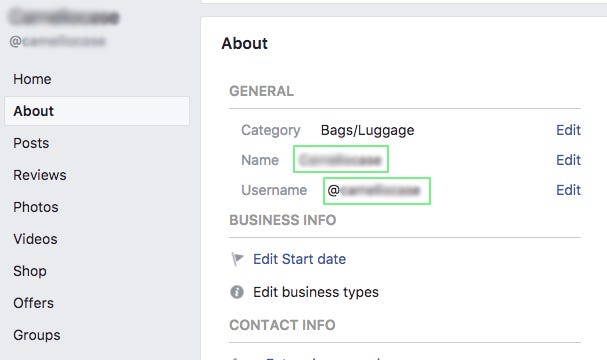Before You Build The Business: A Recipe for Validating Your Idea
This definitely may not work for every business idea, and is in no way fool proof. Since ending my luxury apparel business several years ago, I always knew that I wanted to approach my next endeavor with a much more structured, intentional approach.
I have observed (both with others and with myself) that often when we develop an idea that we are passionate about, the more we validate it against ourselves (ie: I would totally use something like this), and the stronger the attachment to a single approach to solving the problem becomes. When we have this strong attachment, often times even single person saying something remotely positive about it will be used to justify why we need to buckle down and build this business right this second. The problem with this approach is that it is not data driven. One rule of thumb we should all swear by is “the numbers never lie” (unless the tracking is off, but that’s a whole other Product Management rabbit hole for another time 🐰)
With my latest business idea in fashion accessories, the planner in me would have loved to have perfected building and testing the prototypes before telling the world about it. But with some added encouragement, I am literally “jumping off the business cliff” by following this “recipe” to truly validate whether my idea actually resonates with people (ie: strangers) before truly setting up the business
Step 1: Create a company name
The best thing I learned from a business book called “Made to Stick: Why some ideas survive and others die” by Dan Heath is that the best business names echo the purpose or objective of the business itself. Having elements of what the business will do for the customer in one, simple name makes it a bit easier to intuitively understand and more importantly makes it easier for the potential customer to recall the business when the end user wants to engage. Obviously this approach doesn’t work for every type of business, but I have found it to be particularly helpful when building a new business.
You always need to remember: no one knows who you are.
Once you figure out this company name, buy the domain (dot com always) if you can but this is not necessary.
What I did: I had a rough idea of what I wanted to name my business and what core purpose I wanted to connect the business to. The spelling was the tricky part. It needed it to be similar enough to the spelling of what was familiar (ie: what I was connecting the business to), but different enough to be able to get a unique domain.
Step 2: Create the Facebook Page
Create a Facebook business page. Make sure your page’s Name and Username are the same (as much as possible). The best case is when these 4 are the same: Facebook name, Facebook username, your business name and domain

Step 3: Create the Instagram Page
Same as the Facebook Page step. If your Instagram handle can match the business name would be best. Having all of these elements with the same name contributes to SEO (search engine optimization). Why this is important is because when people hear about your business and Google it to find more details, you want to ensure they are presented with all of your business’ pages on the first search attempt.
Tip: Try to choose a name that is easy to either intuitive in its spelling, or easy to explain its spelling ie: “apple, like the fruit, o, nia — appleonia”
TBH, having an instagram page is much more important these days than having a website. Did you know that 96% of US fashion brands are on instagram? 😱
Step 4: Create the landing Page
Even if you weren’t able to buy the domain, setup a free landing page (with your same business name) and encourage email sign-ups to learn more. I used Launchrock. For my fashion accessories idea, I chose to recognize an email sign-up as a measurement of user engagement ie: a contributor towards validating whether my idea truly resonated with users.
What I did: I was very particular about making sure I secured the same exact username across all of these channels. Only after I selected the name and set up all of the relevant pages I Googled the name expecting to see all of my pages show up. To my surprise an eBay seller (ironically) had the exact same spelling (but was selling completely different products). Their page was being displayed first. I was pretty disappointed at first. But after a few days of adding content to all of my online channels (I also added Youtube) my pages slowly advanced above the eBay sellers. #SEOftw 🙌🏽
Step 5: Leverage each channel to express your idea & use a 30–60–90 day plan to measure performance
Leverage the channels
Since my product is fashion-based, I knew I had to maximize the visual aspect of Instagram. Initially, I simply connected my Instagram profile to my Facebook business page and had the same, identical content pushed to both
Advertising
What I did: I paid (max $200USD) to test out some ads (that I created myself). My ultimate goal of the ad was to drive traffic to my website (which was a launchrock landing page asking for an email sign-up)
Make sure each phase has actionable, measurable steps. The key here is to make sure they feel a bit challenging to reach. If for some reason you meet a goal pre-maturely then the bar wasn’t set high enough.
The 30–60–90 day plan is essential, because everyone has an opinion and as soon as you start sharing your idea with people, trust me, everyone will give you suggestions. Personally, I love hearing what different people have to say. It’s a fun way to see your business from a completely fresh, new perspective. The biggest issue I usually have is being able to filter a good idea from a bad one. When you’re first starting out, it’s pretty tough to stay laser focused on your vision. You may find yourself wanting to “grasp at straws” in order to build traction and justify that this is a viable business. The problem with this scrappy approach is that it can quickly dilute your core business and de-rail you from what you wanted to build in the first place. A relatively strong vision paired with an actionable 30–60–90 day plan can definitely help to keep you on track
What I did: I created these goals when my idea was just a basic (imperfect) prototype. I also kept on re-visiting the 30–60–90 day plans, which was especially helpful on those “lull” days. The best
Key Take Aways
Be intentional and focused with every step of building a business
Leverage free tools to acquire metrics from strangers
Measure the data against your 30–60–90 day plan to validate whether your idea is worth pursuing (I still keep coming back to this every now and again because as you get into the weeds of likes and sales, it’s so easy to lose sight of what you’re truly working towards)
It’s okay if it doesn’t work out the first time! Trust me, I own way more domain names than I would like to admit because I had a great idea and wanted to run with it. The key is to execute! Try and try again, trust me you will get there!


